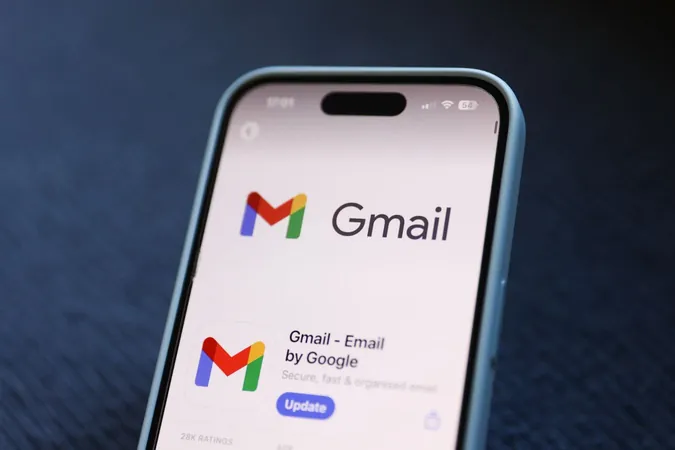
Critical Gmail Warning: Beware of These Deceptive Google Security Alerts!
2024-12-29
Author: Ken Lee
Introduction
In a world where cyber threats are becoming increasingly sophisticated, users of the world's largest email provider, Gmail, must remain vigilant. With over 2.5 billion active users, the stakes are high, and the importance of secure communication cannot be overstated. Recent incidents highlight a disturbing trend: even the most security-conscious individuals can fall prey to clever phishing attacks that exploit Google's own security features.
A Chilling Example
A chilling example involves a user who lost nearly $500,000 in cryptocurrency due to a well-orchestrated scam. The thief initiated contact using a credible Google phone number, leading the victim to believe they were receiving legitimate security alerts. Once the user received a recovery notification prompt—which can appear as a routine reminder following an unauthorized access attempt—they were lured into clicking "yes," inadvertently handing control of their account to the hacker.
Exploiting Trust
This incident sheds light on a simple yet effective tactic employed by attackers: using real Google numbers and email alerts that look genuine. The hacker successfully exploited the trust that users place in Google's processes, demonstrating the need for heightened awareness among all Gmail users. If you receive a recovery prompt and have not initiated the recovery process yourself, do not engage. This critical step can mean the difference between retaining access to your account and falling victim to cyber theft.
Google's Response
In response to the growing threat landscape, Google has implemented innovative AI-driven defenses aimed at protecting its users. According to Andy Wen, Gmail’s senior director of product management, a new large language model has been developed to combat these threats, which enhances the detection of phishing attempts and malwares, blocking about 20% more harmful content than before. However, as threats evolve, so too must the strategies we employ to shield ourselves.
Current Scam Tactics
It’s essential to remain informed about various scams circulating through Gmail. Notable tactics currently include:
1. Extortion Emails
Attackers send emails containing personal information, including home addresses, to intimidate victims into compliance with their demands.
2. Fake Invoices
Scammers dispatch fraudulent invoices to mislead recipients into initiating contact— often resulting in phishing attempts.
3. Celebrity Impersonation Scams
These involve emails that claim to be from famous personalities, either soliciting funds or marketing products.
The Rise of Social Engineering Attacks
Reports from analysts warn that social engineering attacks skyrocketed by 141% in recent months, underscoring the pressing urgency to remain alert against these increasingly sophisticated tactics.
Protective Measures for Users
To counteract these risks, Gmail users are encouraged to adopt the Advanced Protection Program, which necessitates the use of hardware security keys for account access. This additional layer of security ensures that only authorized users can sign in, even if a hacker has the correct username and password. Beyond augmenting Gmail security, this program also enhances protections for Google’s Chrome browser, limiting app installations to verified sources.
Conclusion
With the threat landscape expanding and phishing scams on the rise, being proactive about cybersecurity is more crucial than ever. Remember: never click "yes" on any recovery prompt unless you are sure you initiated the request yourself. Stay safe, stay informed, and protect your digital identity!




 Brasil (PT)
Brasil (PT)
 Canada (EN)
Canada (EN)
 Chile (ES)
Chile (ES)
 Česko (CS)
Česko (CS)
 대한민국 (KO)
대한민국 (KO)
 España (ES)
España (ES)
 France (FR)
France (FR)
 Hong Kong (EN)
Hong Kong (EN)
 Italia (IT)
Italia (IT)
 日本 (JA)
日本 (JA)
 Magyarország (HU)
Magyarország (HU)
 Norge (NO)
Norge (NO)
 Polska (PL)
Polska (PL)
 Schweiz (DE)
Schweiz (DE)
 Singapore (EN)
Singapore (EN)
 Sverige (SV)
Sverige (SV)
 Suomi (FI)
Suomi (FI)
 Türkiye (TR)
Türkiye (TR)
 الإمارات العربية المتحدة (AR)
الإمارات العربية المتحدة (AR)